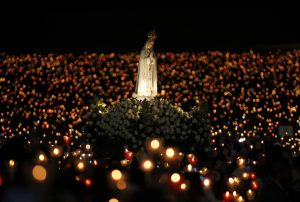On June 8, three deacons were consecrated in Zaitzkofen for the Society. The ordination takes place at the end of June.
(Berne) The seminaries of the fraternity of St. Pius X (FSSPX) in the northern hemisphere end their academic year in the month of June, the Month of the Sacred Heart of Jesus. At the end of the academic year, ordination is traditionally held around the 29th of June, the feast of apostolic princes Peter and Paul. The Society will receive thirteen new priests in a few days.
Founded by Archbishop Marcel Lefebvre, the Society maintains three seminaries in the northern hemisphere, one each with a German, French and English language of instruction. There are two more seminaries in the southern hemisphere, one in Argentina with Spanish and one in Australia with English as the language of instruction. Diaconal and priestly ordinations take place there just before Christmas: at the Holy Cross Seminary in Australia on 19 December and at the seminary of Our Lady Coroner in Argentina on 21 December 2019.
In the United States, Bishop Alfonso de Galarreta will be consecrating five new priests - all Americans - on June 21 at the St. Thomas Aquinas Seminary in Dillwyn, Virginia.
In Switzerland, Bishop Bernard Tissier de Mallerais will hand over six priests — four Frenchmen, one Englishman and one Italian - in the seminary of St. Pius X in Ecône on 28 June.
Finally, Bishop Bernard Fellay will consecrate two candidates for new priests - a German and a Pole - on Sunday, June 30, in the Bavarian Seminary of the Sacred Heart of Jesus in Zaitzkofen.
All ordinations are open to the public. The seminaries explicitly invite the faithful to participate in the Holy Mass and to receive the blessing of the new priests.
Already on June 8, the Pentecost Vigil, Bishop Fellay had consecrated three new deacons in Zaitzkofen - a Pole, an Austrian and a German. In Switzerland, the diaconal ordination takes place at the same time as the priestly ordination, whereas in the USA it took place in April.
Regarding the consecrations Rector in Zaitzkofen, P. Franz Schmidberger emphasized on this occasion that:
"In this way, the Church will be renewed step by step in the German-speaking countries and in the countries of Eastern Europe, even if the work takes more time than one would wish."
P. Schmidberger was the first successor of Archbishop Lefebvre as Superior General of the Society of Saint Pius X. He was followed by Bishop Bernard Fellay, who headed the Society for 24 years. In July 2018 he was replaced by P. Davide Pagliarini.
Text: Andreas Becker
Image: fsspx.de (screenshot)
Trans: Tancred vekron99@hotmail.com
AMDG






















